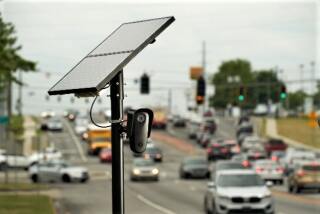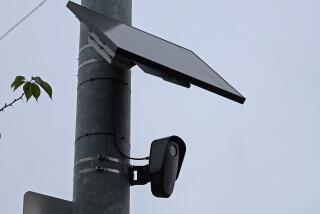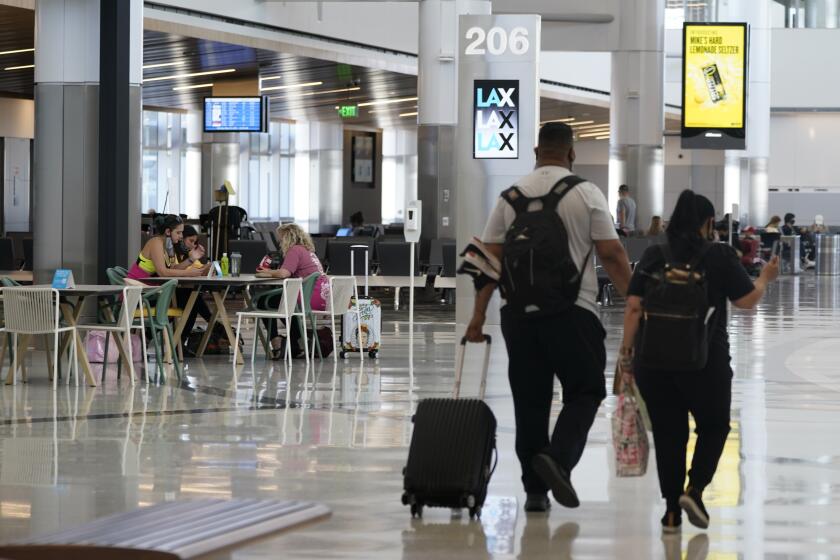PUBLIC PLACES : Always on Camera
- Share via
In a few years, the tollbooth will be a thing of the past. Like soup cans, every vehicle will have a bar code. It will be read by roadside electronic scanners similar to those in supermarkets. Drivers will be billed every month by mail.
Planners hope the “Intelligent Vehicle Highway System” will speed commute times and save money. But it also means that the government--and maybe, someday, others with scanners--will know who is driving where.
As surveillance equipment becomes smaller and less expensive, there will be lots more of it in public places.
Already in the new and still-unopened Denver International Airport, there are no fewer than 1,500 surveillance cameras.
A handful of cities already use cameras to check speeders and red-light runners. The Blue Line between Los Angeles and Long Beach uses them at rail crossings. Others are testing the use of cameras at dangerous street corners to check crime.
During tests in New York City, the number of drivers who obeyed traffic signals increased by 80% when cameras were used.
But Bob Smith, the publisher of the Privacy Journal, a newsletter published in Providence, R.I., worries about a long-term “coercive effect” of compromising people’s privacy. “It alters the culture because people don’t take risks, they are less creative,” he said. “Each person in the society keeps his nose clean.”
More to Read
Sign up for The Wild
We’ll help you find the best places to hike, bike and run, as well as the perfect silent spots for meditation and yoga.
You may occasionally receive promotional content from the Los Angeles Times.






